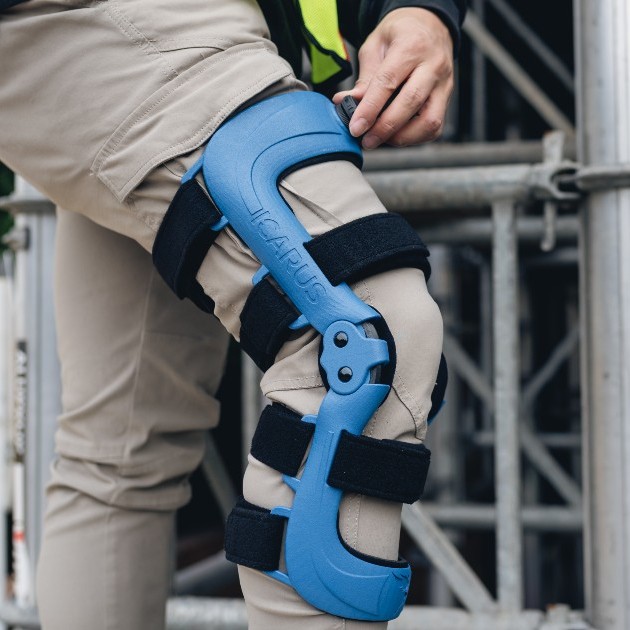Knee ligaments are bands of tissue that keep your knee joints stable. They connect your thigh bone (femur) to the shin bone (tibia), supporting those bones against excessive movement and rotation. The knee contains four major ligaments, which are the:
Medial collateral ligament (MCL)
Lateral collateral ligament (LCL)
Anterior cruciate ligament (ACL)
Posterior cruciate ligament (PCL)
Together, all of these ligaments shield the center, back, and both sides of the knee from injuries.
However, when one or more of those ligaments are torn or sprained, they can no longer protect your bones against an unhealthy range of motion (ROM). For this reason, it is relatively common for athletes to suffer from knee ligament injuries, which may result from:
An unexpected change of direction, in which the knee is unable to turn itself properly
or landing awkwardly on a jump or stopping or falling suddenly on an overextended, straight knee.
No two knee ligament injuries are alike. Some injuries may be mild, involving only a sprained knee ligament. Others may be more serious, involving completely torn knee ligaments.
If you suspect you have injured your knee, you can perform a few quick tests at home to assess whether you should contact a doctor. In the following sections, we will explore some of the common symptoms of a knee ligament injury and how to identify whether or not you have one.
Please note that this guide does not diagnose or treat knee injuries. It is simply meant to be a “pre-check” to help you assess the situation at home before seeking further aid.
Swelling
Swelling may happen instantly or soon after the injury. In some cases, it may not happen at all. A swollen knee following a ligament injury happens due to an inflammatory response and an accumulation of fluid in the injured area. This is the body’s mechanism to promote tissue repair and healing and protect the area from further damage.
Notice whether the injured area is sensitive, red, swollen, or warm to the touch. If that is the case, apply a cold compress to the area for 15-20 minutes. If the pain and swelling persist, contact your doctor.
Muscle Weakness
Due to the stabilizing function of knee ligaments, any compromise to them may result in decreased muscle function. Once the pain and swelling diminish, notice how movements like bending or straightening the injured knee feel.
While it is normal to feel a certain lack of strength in that area, feeling extreme weakness or having little to no control of those movements may warrant immediate medical attention.
Instability
When it comes to knee instability after an injury, it tends to manifest in several different ways. Some patients report that their knee feels like it may “give way” at any moment. Others report a “dislodged” feeling in the knee, while some may feel like their knee is “slipping out of place.” Depending on the severity of the injury, patients may not be able to stand up after falling.
You should contact your doctor if you notice any of the above signs of instability.
Level of Pain
Pain is another factor that varies widely among patients. While some may feel extreme pain at the time of the injury, others may not until several hours later. Others mention feeling discomfort but not pain. Because pain tolerance is an individual factor, you should assess your own level of pain.
You will know whether the injury is mildly painful and requires no immediate attention or if it is excruciating and something may be wrong. If your knee is painful to the touch or you cannot bear weight on it, your case may require medical attention.
Inability to Bend or Move Leg
A common sign of knee ligament injuries is a difficulty or inability to move your knee correctly. It may also be difficult to bend your knee at a 90-degree angle or straighten it out entirely to 0 degrees. That happens due to the knee’s limited ROM, which hinders its flexibility.
Try gently bending and straightening your knee. Notice if you encounter any resistance, discomfort, or pain. If you find those movements challenging, this could indicate a potential ligament injury. If you cannot move your leg in any direction, contact your doctor as soon as possible.
Popping, Cracking, or Snapping
Once again, different patients report hearing different sounds at the moment of impact. Regardless if the sound is a pop, a crack, a snap, or a crunch, those are uncommon sounds that should not be ignored. These sound may or may not be followed by pain.
Is My Knee Ligament Injury Serious?
The severity of a knee ligament injury will depend on each particular case.
Importantly, even mild injuries require proper at-home treatment. Failing to provide a knee ligament injury with adequate care and healing practices may result in complications. Therefore, contacting your doctor for a quick check-up is always a good idea.
Of course, medical professionals will provide treatment courses on a case-by-case basis. Some patients may benefit from physiotherapy, while others require a more urgent approach, such as surgery. However, a common part of knee ligament injury rehabilitation often involves the use of medical knee braces.
If knee braces are a part of your treatment course, consider the Ascender Unloader Knee Brace by Icarus Medical. Its form-fitting and lightweight design maximizes comfort and prevents sliding. At the same time, its fully adjustable assistance unloads up to 40 lbs from your knee. If interested, talk to one of our experts to learn more.

